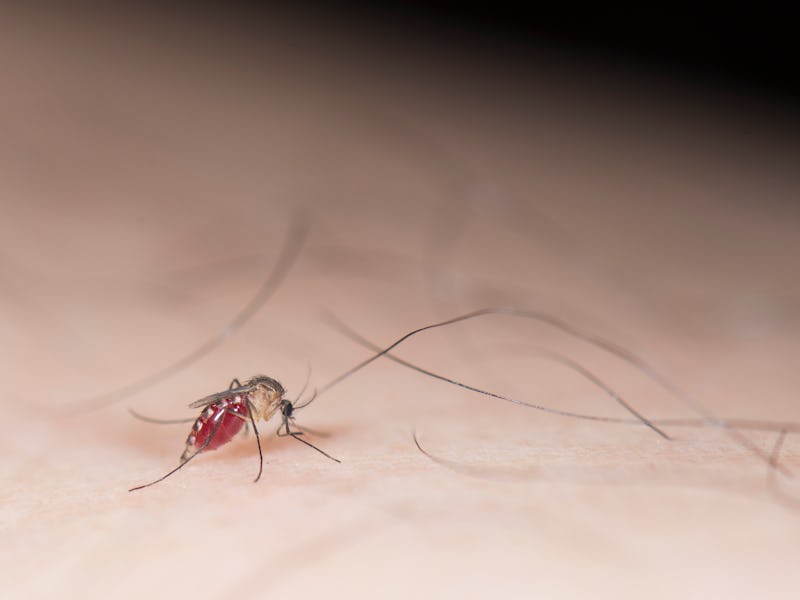Nobody Should Be Surprised That Kansas Is at High Risk for West Nile Virus
The spread of vector bugs is pretty much inevitable now.

The Kansas Department of Health and Environment (KDHE) announced Friday that half of Kansas is at a high risk for West Nile virus. But if you think Kansas sounds like an odd place for a tropical disease to thrive, we’ve got news for you: It’s not. In fact, Kansas and neighboring states are becoming more and more hospitable to the Culex mosquitoes that spread West Nile virus, as well as mosquitoes that spread other diseases like Zika. That’s right. Climate change is quickly transforming parts of the central United States into nurseries for insect vector-borne diseases. Welcome to 2018.
As average temperatures rise, places like Kansas that were once safe from mosquito-borne diseases are becoming hotter and wetter, creating optimal conditions for mosquitoes to breed. The KDHE reports that, though there have not yet been any cases of West Nile virus in 2018, from 1999 to 2017 there were 600 cases of the worst form of the disease in Kansas, including 30 deaths. In the KDHE’s latest announcement, the agency indicated that, based on historical human cases of the disease, half of the state is at a high risk for West Nile virus infection, while the rest of the state is at a moderate risk.
“Know your risk and take action to prevent mosquito bites to protect yourself and your family against West Nile virus,” Dr. Greg Lakin, state health officer, said in the announcement.
West Nile virus is transmitted to humans by several species of mosquitoes belonging to the Culex genus, but very rarely from human to human. According to the US Centers for Disease Control and Prevention, 80 percent of people infected with West Nile virus show no symptoms. But for the remaining 20 percent, symptoms can include headaches, body aches, joint pains, vomiting, diarrhea, or rash. Even less commonly, about one in every 150 people develop serious symptoms affecting the central nervous system, including brain and spinal inflammation. This condition results in death in about 10 percent of those cases.
There is currently neither a human vaccine nor a cure for West Nile virus, so the only thing you can do is avoid being bitten by a carrier mosquito. To this end, the KDHE recommends draining any source of standing water around the home, using effective insect repellants and covering exposed skin while outdoors, and making sure window screens are in good repair. The agency also notes that, since mosquitoes are most active around dawn and dusk, people may want to avoid going outdoors during that time.
Unfortunately, recent trends suggest that this is the new normal in the United States. In May, scientists from the CDC announced that the number of illnesses spread by bugs tripled from 2004 to 2016. CDC scientists carefully avoided confirming that climate change was to blame for increasing the number of cases, but they did say that warmer weather is both expanding the range of disease vector bugs and increasing the portion of the year that they’re active, so we can read between the lines.
And while the CDC’s report is somewhat exaggerated by Zika cases in 2016, the factors that are contributing to West Nile virus are more or less the same as the factors contributing to other vector-borne diseases.
Don’t let this get you down when it comes to summer outdoor recreation. Just continue to take the same precautions you’d normally take when it comes to mosquitoes. And get used to it, because this is how things are now.